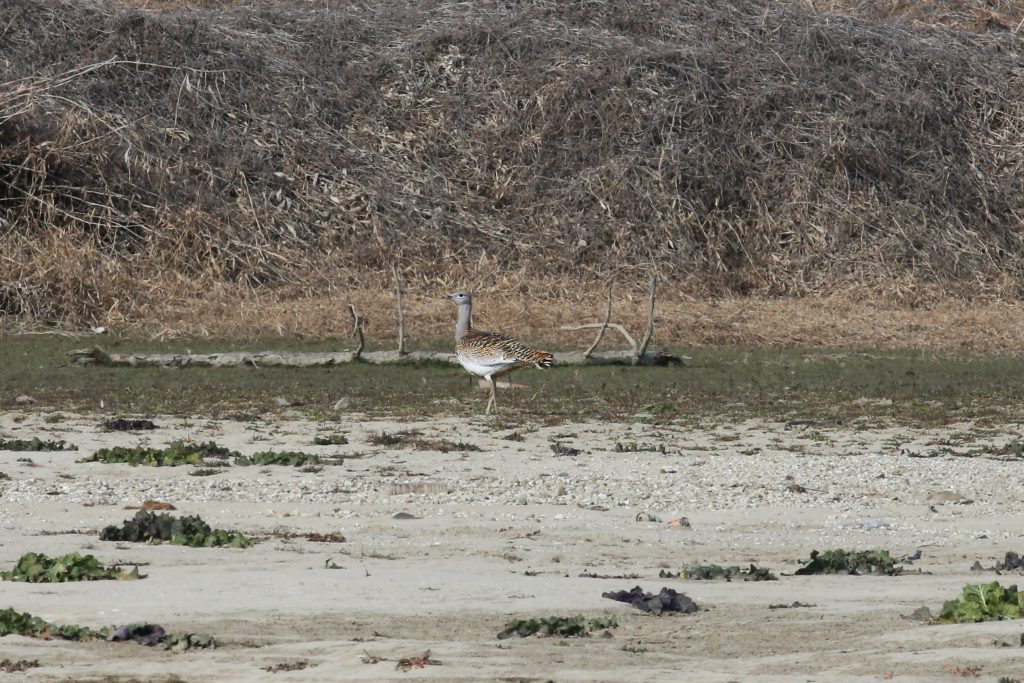On January 17, 2020, NRICH discovered the great bustard (Otis tarda), a Korean Natural Monument, in the Mangyeonggang River in Jeollabuk-do Province. The bird was found by an expert advisor on cultural heritage during his site search and observation for other natural monument animals in the river. In response, NRICH formed a research group to immediately investigate the situation. The group spotted the great bustard onsite and photographed it.
Unlike the previously known areas such as Cheorwon and Yeoju, this is the first time the bird has been found in the southern province of Jeollabuk-do. Also, this is the first time that it has been spotted in the southernmost location in the nation. This discovery was significant for it could deepen understanding of the migratory path of this rare bird.
The great bustard is a large terrestrial bird that mostly inhabits open grassland and farmland in Mongolia, China, Kazakhstan, Ukraine, and other countries. It was a common sight in Korea in the past, but since the Korean War, it has mostly disappeared for a variety of reasons, including overhunting and loss of habitat.








Leave a Reply